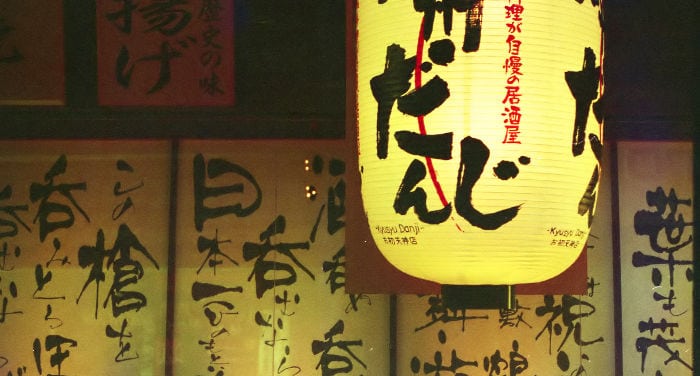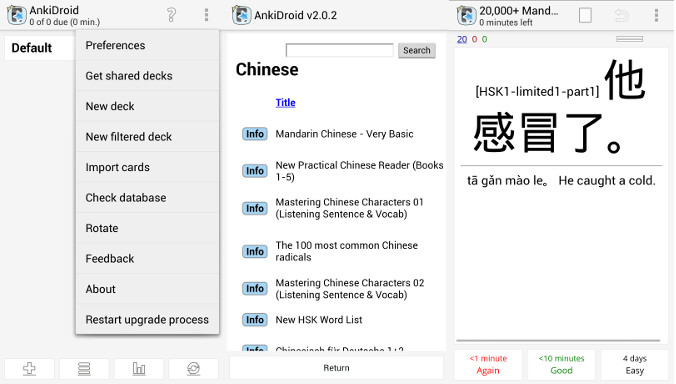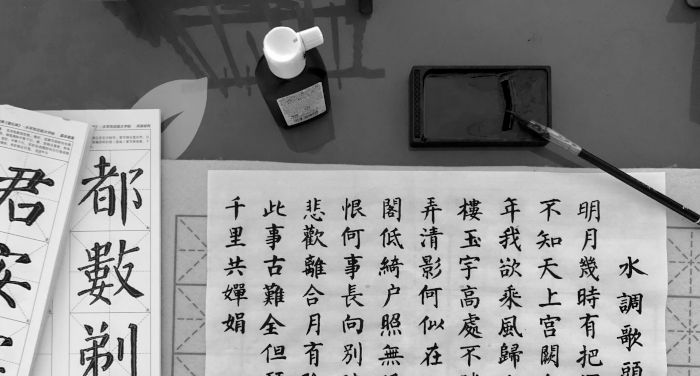
In the Chinese language, the verb can be followed or preceded by several specific particles that specify its meaning. These specific particles, the majority of the time, are pronounced in the neutral tone.
In this article we’ll see the particles that indicate the aspect of the verb.
The completed aspect of the verb by means of the particle 过
To indicate the completed aspect of the verb, or to represent the action as an experience had at least once in life or to indicate an action as a completed event, one would use the particle 过 (guò), which is inserted to the right of the verb to which it refers:
我去过北京。
Wǒ qù guo Běijīng.
I’ve been to Beijing.
我没去过上海。
Wǒ méi qù guo Shànghǎi.
I’ve never been to Shanghai.
我吃过中国菜。
Wǒ chī guo Zhōngguó cài.
I ate Chinese food.
我没吃过泰国菜。
Wǒ méi chī guo Tàiguó cài.
I’ve never eaten Thai food.
我看过《哈利波特》。
Wǒ kàn guo Hālì Bōtè.
I read Harry Potter.
我没看过《权利的游戏》。
Wǒ méi kàn guo Quánlì de yóuxì.
I’ve never seen “The throne of Swords”.
Note that the negating adverb 没 (méi) can also be followed by the verb 有 (yǒu), which means “to have / to have been” without this affecting the meaning of the phrase. Here’s an example:
不幸,他没有写过一本小说。
Bùxìng, tā méiyǒu xiěguo yī běn xiǎoshuō.
Unfortunately he has never written me a novel.
Note that the particle 过 is used when speaking of actions in which the subject doesn’t regularly do or actions that happened in the distant past. Here are two examples:
我看过那个电影。
Wǒ kàn guo nà ge diànyǐng.
I saw that film (in the past).
我说过他不是好人。
Wǒ shuō guo tā bù shì hǎo rén.
I said that he wasn’t a good person.
Rule: when there are two verbs in a simple phrase, 过 must follow the second verb. In this case, the second verb indicates the reason for the first verb. The first verb, for this reason can be 来 (lái), which means “to come”, 去 (qù), which means “to go”, or 用 (yòng), which means “to use”.
Here’s an example:
我没用筷子吃过饭。
Wǒ méi yòng kuàizi chī guo fàn.
I’ve never eaten using chopsticks.
As you can see in the preceding phrase, when you want to indicate the completed aspect of a verb that supports an object – in this case 吃饭 (chīfàn), which means “to eat”, the particle 过 is inserted between the verb and the object. For example:
开汽车 (kāi qìchē), which means “to drive the car”, becomes 开过汽车 (kāiguo qìchē), or “I drove the car”.
教汉语 (jiāo Hànyǔ), which means “to teach Chinese”, becomes 教过汉语 (jiāoguo Hànyǔ), or “I taught Chinese”.
吃日本菜 (chī Rìběn cài), which means “to eat Japanese food”, becomes 吃过日本菜 (chīguo Rìběn cài), or “I ate Japanese food”.
It’s worth studying the structures tied to the particle 过 since it is frequently used in Chinese:
“Not yet…” -> 还没(有) (hái méi (yǒu)) + Verb + 过 + (呢 (ne))
我还没去过北京呢。
Wǒ hái méi qù guo Běijīng ne.
I still haven’t gone to Beijing.
我还没吃过中国菜。
Wǒ hái méi chī guo Zhōngguó cài.
I still haven’t eaten Chinese food.
For the written form, it is recommended to use the more formal 尚未 (shàngwèi), which always means “not yet”, derived from the classical:
图老师的学生尚未去过中国。
Tú lǎoshī de xuésheng shàngwèi qùguo Zhōngguó.
Professor Tu’s students have not yet gone to China.
“I have never…” -> 从来没(有) (cóng lái méi (yǒu)) + Verb + 过
我从来没有吃过这里的菜。
Wǒ cóng lái méi yǒu chī guo zhèlǐ de cài.
I have never eaten food from these parts.
Curiosity: A phrase with the particle 过 can have the modal particle 了 (le) at the end to emphasize the sense of something that has already been done. It is very common to find a phrase that contains both particles listed above. Here’s an example:
我看过了《阿凡达》。
Wǒ kàn guo le “ā fán dá”.
I have already seen “Avatar”.
To make a more formal and elegant phrase with 过 , you can insert the word 曾经 (céngjīng), “once/ always”. The negative form is 不曾 (bùcéng) / 未曾 (wèicéng) + Verb + 过.
Here are two examples:
J.K.罗琳曾经出过《哈利波特》系列的作品。
J.K. Luó Lín céngjīng chū guò Hālì Bōtè xìliè de zuòpǐn.
J.K. Rowling published the works of the Harry Potter series.
我未曾写过一本小说。
Wǒ wèi céng xiě guò yī běn xiǎoshuō.
I have never written a novel.
Actions in the course of development using the particles 正 and 在
To indicate an action in the course of development or at its conclusion at the time being referred to, you use the adverbs that are always positioned to the left of the verb.
The adverbs to indicate an action in progress are: 正 (zhèng), which means “in the middle of”, 在 (zài), which means “about to do”, 正在 (zhèng zài), which means “right in the middle of”.
The action in progress can take place in the past, present or future. Here are some examples:
你在作什么?我正学习,你呢?我正在吃饭。
Nǐ zài zuò shénme? Wǒ zhèng xuéxí, nǐ ne? Wǒ zhèng zài chī fàn.
What are you doing? I’m studying, and you? I am eating.
To emphasize an unfinished situation you often use the modal particle 呢 (ne) inserted at the end of the phrase.
我们昨天这个时候在出发呢。
Wǒmen zuò tiān zhè ge shíhou zài chū fā ne.
Yesterday at this time we were leaving.
明天这个时候我正在上课呢。
Míngtiān zhè ge shíhou wǒ zhèngzài shàng kè ne.
Tomorrow at this time we’ll have the lesson.
It is also plausible to use only the modal particle 呢, at the end of the phrase without the use of one of the aforementioned adverbs.
他们说话呢。
Tāmen shuō huà ne.
They are speaking.
他们吃饭呢。
Tāmen chī fàn ne.
They are eating.
下雨呢。
Xiàyǔ ne.
It is raining.
To respond “yes/no” to a question pertaining to an action in progress, you can use 对 (duì), which means “correct”, 不对 (bù duì), which means “incorrect”, 没有 (méi yǒu), which means “no”, and 不是 (bù shì), which always means “no”.
Here’s an example:
你在上网吗?没有,我在做功课。
Nǐ zài shàng wǎng ma? Méi yǒu, wǒ zài zuò gōngkè.
Are you on the internet? No, I am doing my homework.
To form a phrase in the negative form, depending if it is an action happening in the present, future or past, you use one of the following structures:
Present / future -> 不是在 (bù shì zài) + Verb
Past -> 没(有)在 (méi (yǒu) zài) + Verb
我不是在吃饭。
Wǒ bù shì zài chīfàn.
I am not eating.
我昨天这个时候我没在睡觉。
Wǒ zuótiān zhè ge shíhou wǒ méi zài shuìjiào.
Yesterday at this time I was not sleeping.
Attention: the progressive form can also be used with adjectives that indicate a psychological state or temporary feeling, such as 的时候 (de shíhou), or one of the time-related expressions of the Chinese language that can be translated as “while/when”.
他正在难过的时候,他的狗回家了。
Tā zhèng zài nán guò de shíhou, tā de gǒu huí jiā le
Just when he was sad, his dog came back home.
The continuing of an action of state of action using the particle 着
To indicate the persistence of the action of a verb you need to add the particle 着 (zhe) right after the verb it is referring to. Here are some examples:
他们正听着音乐。
Tāmen zhèng tīng zhe yīnyuè.
They are listening to music.
他们在看着电视。
Tāmen zài kàn zhe diànshì.
They are watching television.
Note that when you express the continuation of a generic action (to watch, listen to, eat) it is preferable to omit the particle 着, and exclusively use the adverbs 正 , 在, 正o 在.
The particle 着 is however obligatory in the presence of verbs that express actions that are temporary or momentary. After verbs such as 坐 (zuò) “to sit oneself”, 穿 (chuān) “to put on”, 站 (zhàn) “to stand up”, 开 (kāi) “to open”, 戴 (dài) “to put” (glasses, hair), 贴 (tiē) “to glue/attach”, 摆 (bǎi) “to place”, 等 (děng) “to wait”, 点 (diǎn) “to turn on” (the light), the particle 着 indicates the persistence of the state derived from the action of the verb.
Here are a few examples:
我穿着T恤。
Wǒ chuān zhe T xù.
I put on the T-shirt.
学生坐着,老师站着。
Xué sheng zuò zhe, lǎoshī zhàn zhe.
The students are seated; the professor is standing.
大门开着。
Dà mén kāi zhe.
The gate is open.
桌子上摆着花。
Zhuōzi shang bǎi zhe huā.
The flowers are placed on the table.
老师戴着眼镜。
Lǎoshī dài zhe yǎnjīng.
The professor brings the eyeglasses.
他们等着我。
Tāmen děng zhe wǒ.
They are waiting for me.
灯点着。
Dēng diǎn zhe.
The lamp is turned on.
灯亮着。
Dēng liàng zhe.
The light is turned on.
Important: when in a phrase the verb that requires the particle 着 is found in a subordinate phrase, it expresses a contemporary relationship with the verb of the principle phrase. In the majority of cases, this contemporary relationship is expressed using the gerund tense.
Here are a few examples:
老师站着上课。
Lǎoshī zhàn zhe shàng kè.
The professors gives the lesson standing up.
学生坐着听课。
Xuésheng zuò zhe tīng kè.
The students listen to the lecture sitting down.
小孩子哭着说话。
Xiǎo háizi kū zhe shuōhuà.
The child speaks while crying.
他们唱着欢迎老师。
Tāmen chàng zhe huānyíng lǎoshī.
They welcomed the professor by singing.
It is worth mentioning the following construction which is often used in modern Chinese:
Verb 1 + 着 + Verb 1 + 着 + Verb 2
This construction indicates the interruption of an action or a state that persists, followed by the start of a new action or the change of a state of being. This is one of the constructions that we foreigners have a hard time mastering, so practice a lot!
Here are a few examples:
这本书很有意思,我看着看着笑了。
Zhè běn shū hěn yǒu yìsi, wǒ kàn zhe kàn zhe xiào le.
This book is interesting, while I read it I start laughing.
他走着走着跑了。
Tā zǒu zhe zǒu zhe pǎo le.
While he walked he began running.
他看电视,看着看着睡觉了。
Tā kàn diànshì, kàn zhe kàn zhe shuìjiào le.
While he watched television he fell asleep.
他喝酒,喝着喝着喝醉了。
Tā hē jiǔ, hē zhe hē zhe hēzuì le.
While he drank he got drunk.
Note that the particle 了 is the most appropriate one to indicate change.
Another commonly used construction which indicates that the speaker is busy doing something is the following:
忙着 (mángzhe) + Verb
忙 (máng) is a predicative adjective, which means “to be busy, to be occupied”
Here are a few examples:
你忙着作什么?
Nǐ máng zhe zuò shénme?
What are you busy doing?
我忙忙着书。
Wǒ máng zhe kànshū.
I am busy reading.
你忙着学习吗?
Nǐ máng zhe xuéxí ma?
Are you busy studying?
没有,我忙着玩儿。
Méi yǒu, wǒ máng zhe wán’er.
No, I am busy playing.
Curiosity: being busy doing something in China is considered something noble, honorable, so much so that the greeting that has always been popular in China represented as 吃了饭没有?(chi le fan mei you?), which means “Have you eaten?” is gradually disappearing, being replaced by the more common 最近忙吗? (zuijin mang ma?), which means: “Are you busy lately?”
Photo Credits: ![]() Chinese characters by 8 Kome
Chinese characters by 8 Kome



